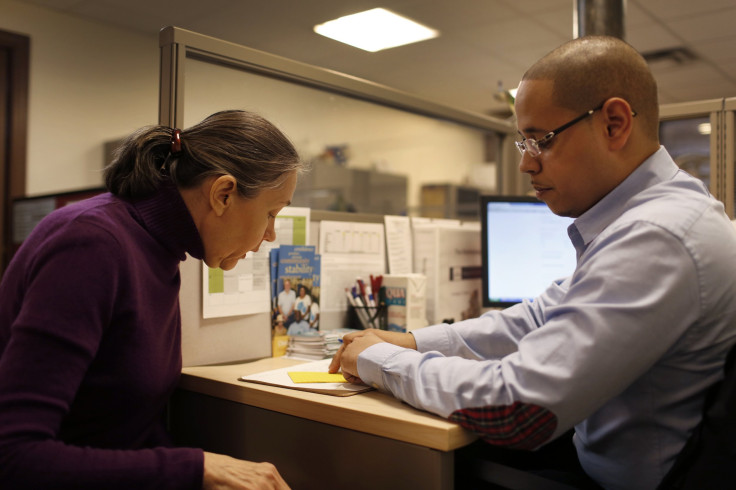Obamacare Website Improvements 2015: Can Better Tools On HealthCare.Gov Lure The Uninsured?

Jennese Torres loves Obamacare – the subsidies that help pay for it, the free birth control and the minimal $10 copay to see her regular doctor. Obamacare “saved me,” said Torres, a lawyer in her 40s who has her own practice in Tarrytown, New York, and who first signed up for health insurance through the Affordable Care Act in 2013. What Torres does not love, however, is the confusing process of buying insurance.
“The website wasn’t bad,” Torres said of HealthCare.gov, the oft-lambasted federal healthcare website. “The worse part really was understanding the options,” she said. Should she pick a plan with a lower deductible but higher premium? Should she get dental coverage? It was “overwhelming,” Torres said. “I didn’t want just the least expensive plan. I wanted a plan that’ll work with my health needs.”
With just over two weeks to go before Obamacare’s third enrollment period begins, on Nov. 1, the White House has planned to make several key improvements to its once-troubled website as part of a surge in efforts to get roughly 1 million new people to sign up for coverage. One of them is a cost-comparison tool, along the lines of what Torres said she would have liked and what consumers perusing healthcare plans have long asked. But not even a made-over website can fix what healthcare advocates see as one of the primary barriers to getting the millions of uninsured but qualified people in America to sign up for Obamacare: getting them to the website to enroll in a health insurance plan in the first place.
“Building the website and making it work is not enough,” Jenny Sullivan, director of the Best Practices Institute at Enroll America, a Washington, D.C.-based national nonprofit that works to increase enrollment in the Affordable Care Act, said. “Many of the remaining uninsured haven’t take the next step, not because coverage is unaffordable but because it’s perceived to be unaffordable,” she said, pointing to the fact that many are still unaware they can get subsidies from the government to offset the cost of health insurance bought on Obamacare exchanges.
Two of the biggest changes coming to the website in November are tools that help consumers compare plans and out-of-pocket costs in a detailed way as well as check whether their preferred doctors and regular drugs are covered by the plan they’re considering. Unpredictable or unexpected costs, as well as uncertainties over what a plan covers, are some of the biggest deterrents that stop people from going to the doctor — even if they have health insurance.
Starting Nov 1, you can enroll, re-enroll, or change plans through the Marketplace. http://t.co/B5sdA8VWHQ pic.twitter.com/J0g0MsBt9f
— HealthCare.gov (@HealthCareGov) October 9, 2015A clear understanding of how much a drug or a doctor visit will cost under each plan should help people pick plans that are tailored to their needs and their medical habits, the Obama administration and healthcare advocates have said. “We are working hard to improve the customer experience with upgrades to our site and more tools to help people find what they are looking for,” Health Secretary Sylvia Burwell said Thursday.
But even before consumers sign up, the belief that health insurance through Obamacare will be unaffordable and the lack of awareness that subsidies are available to offset the cost can dissuade them from signing up. In 2014, the average Obamacare premium in 2014 after subsidies was $82 per month. Yet nearly 80 percent of the 10.5 million uninsured people in the United States who qualify for Obamacare coverage would be eligible to receive subsidies, the Obama administration has found, but about 60 percent of those without insurance either don't understand how those subsidies work (they come in the form of tax credits) or don't know that they exist at all.
“There is still a challenge in reaching the remaining uninsured who don’t know about the website,” said Christina Postolowski, health policy manager for the group Young Invincibles, a Washington, D.C., nonprofit that advocates for youth voices in healthcare reform. The question of healthcare literacy – understanding healthcare jargon and how it applies in real life – is part of that challenge.
Analysis published by Enroll America in May found that nearly half of uninsured people in the United States lacked confidence in choosing a health insurance plan, and more than two-thirds of them wanted more information about what different terms – deductible, cost-sharing – meant.
The U.S. government has itself acknowledged the problem as it tries to bring 10 million people into the fold during the next round of open enrollment, which runs from Nov. 1, 2015, to Jan. 31, 2016. The Obama administration is trying to make health insurance more understandable for people and make it more well-known that some people qualify for financial aid, Lori Lodes, communications director for the Centers for Medicare and Medicaid, which runs the HealthCare.gov website, said in a call with reporters Thursday. But there’s still a “knowledge gap,” she said.
Torres, the lawyer from New Jersey, said she wanted the website to provide more helpful hints about the drawbacks and advantages of certain plans, perhaps “a chart or visual to make it easier to digest all that information.” Even for someone who loves her Obamacare, “it’s too much,” she said.
© Copyright IBTimes 2025. All rights reserved.





















